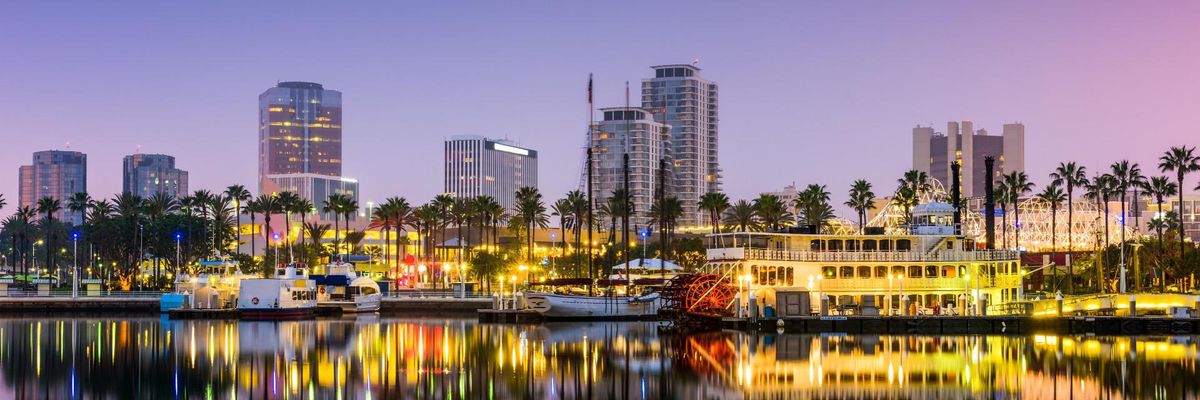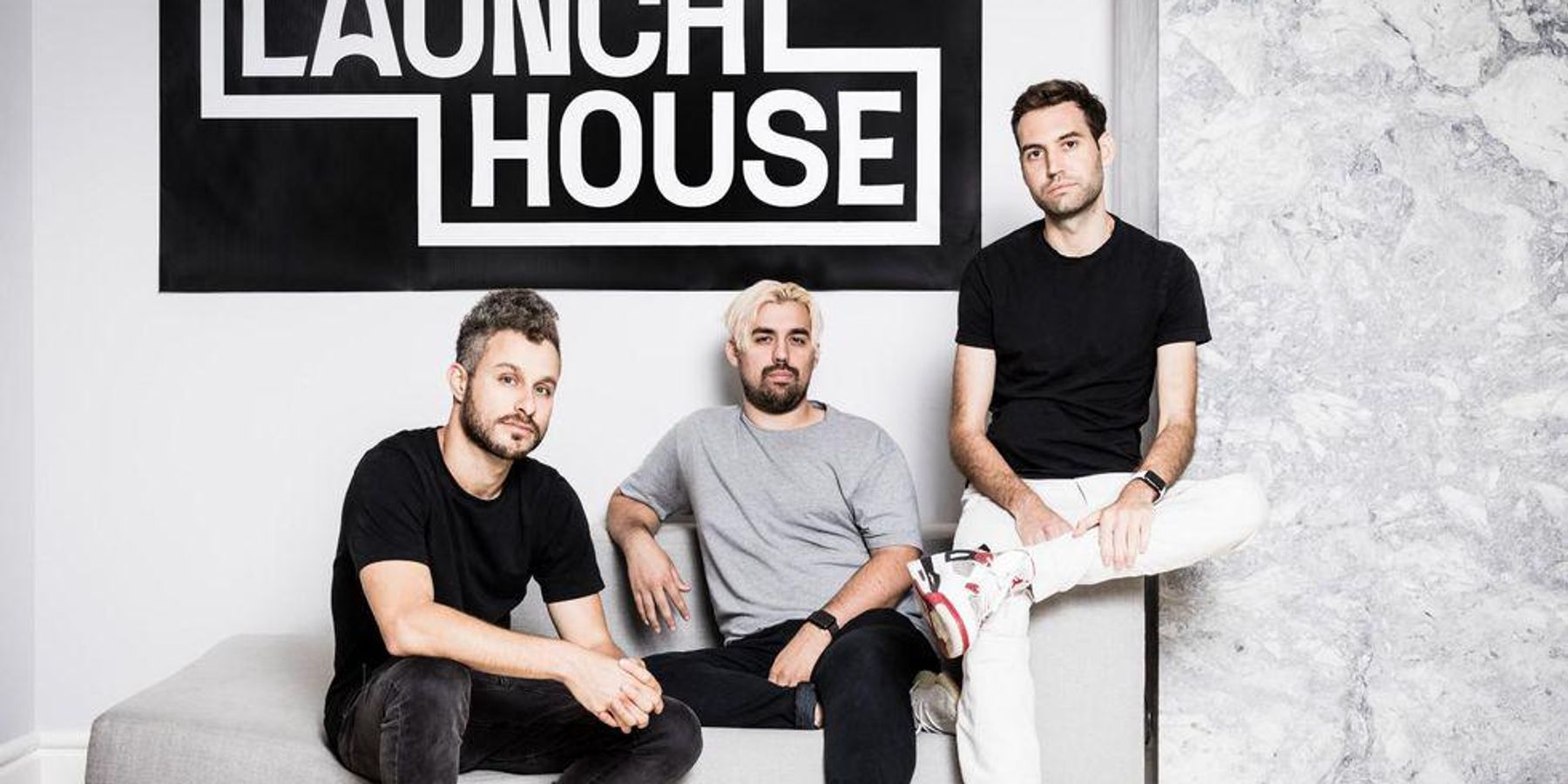

Get in the KNOW
on LA Startups & Tech
X
Photo by Sean Pavone/ Shutterstock
Meet the Startups Joining the Long Beach Accelerator's New Cohort
Deirdre Newman
Deirdre Newman is an Orange County-based journalist, editor and author and the founder of Inter-TECH-ion, an independent media site that reports on tech at the intersection of diversity and social justice.
Long Beach has a long history of innovation. It’s one of the densest aerospace hubs on the West Coast. There’s a vital port there, and the city is home to several tech industries—including health care, space tech and cybersecurity. That, along with its colleges and universities, have made Long Beach an enticing destination for entrepreneurs.
It’s within this environment that the Long Beach Accelerator sprouted in 2019 and has grown since. To date, the accelerator has cycled 20 companies through its four-month program, helping them raise a total of over $12 million.
On July 5, the program will welcome its fourth cohort of startups from around the world, participating in a hybrid combo of virtual and in-person sessions. Each cohort includes between five to 10 companies.
Long Beach, along with Cal State University, Long Beach’s Institute for Innovation and Entrepreneurship and capital provider Sunstone Management, are all partners in this public-private model of startup investment. The accelerator itself operates as a nonprofit.

Long Beach Accelerator Managing Director Andrea White-Kjoss
The city provides help with some funding, covering the costs for some low- to moderate income Long Beach-based founders whose companies are accepted into the accelerator.
The organization's partnership with CSULB enables it to help founders move from idea stage to execution at the institute, and then advance to business growth via the accelerator.
Sunstone Management, a private capital management and investment firm, provides funding for the incoming cohorts. The firm's venture capital fund typically invests $100,000 in the startups as soon as they join the accelerator and takes a 6% equity stake in return.
Sunstone had also been providing some follow-on funding on a case-by-case basis. It upped the ante earlier this year by promising an additional $500,000 to current cohort and alumni.
“It's a model that brings enormous resources to the table for our portfolio companies, as well as for economic development, acting as a growth engine for the region,” managing director Andrea White-Kjoss told dot.LA.
A serial entrepreneur who has served as CFO at several companies, White-Kjoss came aboard as the founding managing director in July 2020. Before that, she co-founded seed-stage funding platform ExtraVallis, based in Rancho Santa Fe, and founded Mobis Transportation, which was the product of a public-private partnership with the city of Long Beach.
She also happens to be a 17-year resident of the city.
“So I know intimately how attractive this city is to tech entrepreneurs, from the high-tech industries, to the culture and lifestyle, to the world-class workforce and institutions,” she said. “When you bring all of that together...the opportunity to build a tech accelerator, and more than that really, a tech ecosystem here in Long Beach, was natural and irresistible.”
The accelerator was originally intended to be in-person, but quickly had to pivot to remote sessions during the pandemic. It remains virtual, for the most part, “which has turned out to be a huge source of strength,” White-Kjoss said.
That’s because the founders come from all over the world. There’s no geographic restrictions on who’s accepted and no need to burden founders with moving to Long Beach to participate.
White-Kjoss said the move has fostered diversity, and enabled the accelerator to draw on an international network of mentors, instructors, advisors and investors.
They—along with the accelerator’s staff of three facilitators — get to know the companies and their founders “deeply” and provide individualized assistance, including building strategic partnerships with potential customers and/or marketing partners.
There is still an in-person aspect to the accelerator. All cohort founders fly into Long Beach for about two weeks during the program. While there, they attend in-person workshops and networking events. They also participate in a Demo Day, with investors present. This helps the companies get additional seed funding for continued growth once they graduate.
So far, five graduating startups have received acquisition offers—but none have taken them.
White-Kjoss said that’s because those founders “felt they had much further to take their companies, at least in some degree, due to the empowerment of the tools, resources and networks provided by the accelerator.”
Bump's Success
One success is Los Angeles-based Bump. Since graduating from the Long Beach Accelerator, Bump has raised more than $5 million, co-founder and CEO James Jones told dot.LA.
It’s currently participating in another accelerator, Snap’s in-house Yellow Accelerator, which is now a co-lead investor in Bump, along with Sunstone.
The company is working on an AI-fueled fintech platform for the creator economy, which hasn’t yet launched. It would help creators track revenue from multiple sources, monitor expenses, access credit and manage their crypto and non-fungible tokens (NFTs).
The company has started a waitlist, for access to its credit and financial management tools. Once the services are available users would pay about $400 per year.
The company also plans to integrate micro-advances into its platform, designed to enable creators to stay in full control of their finances and keep 100% of the rights to their work.
Jones said that participating in the Long Beach Accelerator’s very first cohort was a “great springboard” for the company.
Specifically, sessions on customer personas and discovering addressable markets, as well as mentor meetings were “invaluable,” he added.
Meet the Startups In the Long Beach Accelerator's Latest Cohort:
Apsy: Creating the first true fully AI platform to build affordable elegant custom apps.
Crumbraise, Inc.: Fundraising made easy for creators, clubs & causes.
Educational Vision Technologies, Inc.: Automated video editing and content curation using A.I. to make online learning accessible, efficient and engaging.
Gift Pass App Inc.: Streamlining experiences around digital gifting & payments.
The Girls Co LLC: We are a women's health company that is currently focused on a solution to alleviate period cramp pain.
Intellitech Spa Inc.: Intellitech is a realtime telematics, predictive maintenance and driver behavior monitoring platform.
Kwema: Kwema provides an easy to scale Smart Badge Reel Duress Service that reduces incident response time without escalating the situation.
Pathloom, Inc.: Outdoor trip planning made easy!
Rotender: The world's fastest and most reliable bar.
From Your Site Articles
- Launch House Accelerator Expands to New York and Beyond - dot.LA ›
- Techstars' 2021 Space Accelerator Class - dot.LA ›
- Los Angeles' Top Startup Incubators and Accelerators - dot.LA ›
- The Lull in Shipping Could Harm L.A.'s Clean Tech Startups - dot.LA ›
Related Articles Around the Web
Deirdre Newman
Deirdre Newman is an Orange County-based journalist, editor and author and the founder of Inter-TECH-ion, an independent media site that reports on tech at the intersection of diversity and social justice.
LA-Based Matter Moves Into Audio to Create a Better Dating App Experience
06:58 AM | June 04, 2021
Courtesy Matter
The latest entrant in Los Angeles' busy dating app scene has been testing audio elements and a speed dating feature as it builds toward its goal of creating meaningful relationships based on what matters most to people.
Matter is revamping its platform to capture the happy hour experience with audio. The app will soon include a speed-dating feature, allowing users to connect over a two-minute call to determine if they want to match.
Another feature called "communities" will allow users to connect with potential mates based on the interests and values that are most important to them.
Launched in November 2020, Matter grew its core users from USC and UCLA students who relied on it to meet classmates while campuses were closed.
UCLA student Jenna Rose, 22, says she was never a dating app user, but found herself using the app because many of the faces she saw in her feed were already familiar.
"A lot of the people that I was seeing on my feed were people I could actually see myself, you know, meeting up with or being friends with because they were students in the L.A. area," she says.

Matter CEO and founder Monji Batmunkh
CEO and founder Monji Batmunkh says starting off only at two of L.A.'s premier universities allows Matter to focus on solving one problem at a time before expanding nationally.
An Angeleno himself, Batmunkh, 35, says he formed his startup in the area because of the region's diversity and the experimental nature of college dorms' hothouse environment.
"I went to USC and established networks there. I'm very familiar with other schools like UCLA, Santa Monica College, CSUN, UC Irvine, etc. L.A. is a very diverse place where complex cultural communities will be a big part of it," he says. "They are the early adopters, if we can build the products that are liked by college, they happen to be very influential and [will] spread it across other areas."
Batmunkh moved to the U.S. at 16 from Mongolia. He got his associate's degree from Santa Monica College before focusing on business administration and finance at USC and getting his master's at Columbia. From there, he worked as a consultant at McKinsey for four years.
The pandemic, he says, has provided aspiring entrepreneurs with a silver lining.
"It's one of the best times to be starting companies, because the barriers to entry are becoming lower and lower," Batmunkh says, "I think this is a great time to do it especially if you have a network and established connections in your home country, that could be an arbitrage opportunity."
In 2020, Batmunkh launched his first startup, Simpozium, a social network focused on Los Angeles college students. Most of Simpozium users were female and conversations in the app trended toward the dating scene at a time when in-person connections were next to impossible.
Simpozium soon made the switch to a dating app and traded its name for another: Matter.
Last September, Batmunkh was able to bring on Swiss Founders Fund as an investor. The proptech-focused venture firm led an early round that helped Matter raise half a million in pre-seed funding.
The dating app scene is crowded. Big dating apps like Tinder, Bumble and Hinge have relied on their simple format and ease of use to streamline the process. A new crop, led by apps including L.A.-based Lolly and S'More, borrow from popular short video apps like TikTok and Instagram to focus on Gen Z singles.
Matter's format is similar to Hinge, focusing on user likes and prompts. But the app aims to focus on the things that matter to its audience through its user experience, which is more akin to an Instagram feed. The app generates questions that cater to L.A. residents by asking, for instance, "which they prefer: saddle ranch or urth cafe?" and "what's your ideal date in L.A." There are no character limits for the answers.
They allow users to customize the section of "what are you looking for" with users' own words.
Batmunkh focused on honing his app with students at his alma mater, USC, and UCLA before expanding to other college campuses. He's also keen on providing students with opportunities to gain experience and income working for a tech startup. USC student Katrina Nguyen, 20, worked for Matter as a growth development intern.
"Monji did a really great job capturing what startups should be at least like really new startups," she says, "I love that he didn't helicopter us, he really trusted the interns, despite us being college students. We really had a lot of responsibilities as we were basically paving the way for Matter."
Matter will start their pre-registration process for virtual happy hour in the coming week. They plan to re-release their app in Los Angeles in late June.
From Your Site Articles
- 'LinkedIn. Is. Not. A. Dating. Site': Should People Be Trying to Find ... ›
- Lolly, a TikTok-Style Dating App, Goes After Tinder - dot.LA ›
- S'More Dating App Raises $2.1 Million in Seed Funding - dot.LA ›
- Tinder is Booming During the Coronavirus Quarantine - dot.LA ›
- LA's Dating App Startups Had Big Plans Post-Lockdown — But a Return to Virtual Dating Will Do Just Fine - dot.LA ›
- Heart to Heart Audio Dating App Raises $750K Pre-Seed - dot.LA ›
- L.A. Dating Hyperlocal App Is Launching in Los Angeles - dot.LA ›
- L.A. Dating Hyperlocal App Is Launching in Los Angeles - dot.LA ›
Related Articles Around the Web
Read moreShow less
Katherine Abando
Katherine Abando is a lifestyle writer and social media producer from Los Angeles. Her coverage interests include internet culture/tech and Asian American Pacific Islander (AAPI) identity. She enjoys learning about emerging entrepreneurs and digital trends that pop up on her social media feed. Follow her on Twitter @kaband0.
https://twitter.com/kaband0
https://www.linkedin.com/in/katherineabando/
Meet the LA Startup Houses Building Companies Through Co-Living and Creative Energy
06:30 AM | October 07, 2021
Image courtesy of Launch House
Taking their lead from social media entrepreneurs who are creating content from mansions, a new breed of startup incubators and collectives are cropping up across Los Angeles. Their programs were built largely by young entrepreneurs trying to bridge the creator and startup worlds, speak to a generation that has grown up alongside social media.
Some are inspired by other co-living incubators or from founders who wanted to capture the creative energy those houses spawned.
In the Hollywood Hills, a collective started by two twenty-seven year-old entrepreneurs is helping seed-stage companies land funds and build up their products. Across town, a roving launch house focuses on building biotech entrepreneurs. Another is trying to foster breakthrough products in augmented reality.
Here's a run down of some of the most promising co-living concepts, along with their founders and the projects they're incubating.

Launch House
Launch House formed last year after one of its founders tweeted about an experimental gathering of entrepreneurs in Tulum, Mexico. Located in a sprawling Beverly Hills mansion, the hub puts a heavy emphasis on social media and influencer-driven business ideas and runs monthly cohorts of about 20 founders each, connecting them with creators to build up their social media game. Potential participants must apply and then pay an annual membership fee, which includes the four-week live-in residency program and access and introduction to investors and advisors. Participants have to be 18 years of age or older.
"Many creators want access to startup investing opportunities but either don't have a way into top deals, or get pitched so often they can't easily decipher what's a good investment," said co-founder Brett Goldstein, "On the reverse side of things, many founders see collaborating with creators as a great way to reach new target audiences because distribution is a hugely scarce resource."
Several Launch House residents have gone on to raise successful rounds from staid investors including Sequoia and Y Combinator, though a Business Insider report about a COVID outbreak after a recent party raised questions about the culture at the home.

Brazen Bio
Started by longtime friends Shawn Carbonell and Brent Witgen, Brazen Bio is a biotech incubator house based in Redondo Beach which also provides members with lab access to Bio Labs in Torrance.
Inspired by other launch houses, the two PhDs wanted to create the first biotech hub in Los Angeles that combines the region's creator economy with its budding scientists and entrepreneurs.
"Part of our goal is to make it one of the top biotech hubs through us being here. As BioscienceLA Chief Executive Officer Dave Whelan would say, 'we're long L.A.'," said Carbonell, "Most companies need to also become media companies to stay relevant, and where better than Los Angeles for that?"
Four startups were accepted in the first round of what Brazen Bio is calling its 'BRZN1 cohort. The program started last month and runs through December. It's replete with a full line up of founder dinners and mixers, access to Bio Labs' equipment and weekly office hours. The founders aren't yet making seed investments but will be establishing a fund for 2022.
Carbonell said they are trying to find ways to promote Brazen through Discord and social media to Gen-Z entrepreneurs and encourage a new generation to enter the STEM field.

house.ai
The 27-year-old co-founders Robbie Figueroa and Luciano Arango moved from the Bay Area to Los Angeles, where they saw a maturing tech scene they thought could be a good place to build startups. The two convinced their tech friends to make the trip down to the Hollywood Hills, where they created a collective and early-stage fund called House.ai.
House.ai doesn't offer a full-time residency like Launch House. Instead, it sees itself as a place where founders can gather to co-work. Figueroa, a general manager for DoorDash in Puerto Rico, and Arango, a co-founder of San Francisco-based ScopeAI, both live in the house. There's no formal application for House.ai — instead, Arango and Figuero select premiere founders and operators to join them.
In the past year, House.ai has provided co-working space for 37 founders. The program connects them with early-stage venture capital and helps them recruit talent and connect to engineers. Figuero and Arango have so far invested in six of the companies — including cannabis wholesaler Nabis, a Y-Combinator-backed company.
Figuero considers House.Ai an industry-agnostic incubator, though its startups tend to gravitate towards fintech, fulfillment and delivery services, along with some consumer and business-to-business companies.

AR House
The AR House was born out of a tweet from augmented reality developer Aidan Wolf: "anyone organizing a house for snapchat lens creators? Would love to do something like that here in LA."
The response was overwhelming. Among those who reached out was AR creator Lucas Rizzotto.
The team quickly coalesced around the idea of a house dedicated specifically to AR creators and developers. L.A., home to AR juggernaut Snapchat, had more than enough talent. Within a week, the two had met their funding goal, much of it coming from the AR community.
Creators must be 18 years old or older to apply. AR House's founders don't take equity in the companies they help launch, but they do help provide participants with AR hardware to support their projects.
The cohorts will have access to a four-week session complete with dinners for founders, meet-and-greets with investors and other programming. The house doubles as an exhibition space for augmented reality projects, too. AR's first cohort started on October 5 and they signed a six-month lease to their Hollywood Hills house.

Rocketship House
Bay Area native and consumer tech founder Katia Ameri and YouTuber Elijah Daniel bootstrapped Rocketship House in November 2020. The house, based in the Hollywood Hills, boasts a stunning view of Los Angeles and an acre-long vineyard where participants are encouraged to collaboratively contribute to projects focused on the creator economy.
Ameri brings a hard-tech background. She raised $2.2 million for her telehealth platform, Mirra, an at-home allergy diagnosis service, before the pandemic started. Daniel brings social media savvy and a knack for making viral videos. The two say they are focused on projects that help creators develop content distribution and revenue streams.
Rocketship's residents have included musician Trevi Moran, musical artist and YouTuber Sam F and nicotine company Lucy co-founder Samy Hamdouche, whose startup is backed by Y-Combinator.
Daniel and Ameri aren't interested in taking equity. Instead, the pair said the want to focus on building a community of creators and tech entrepreneurs. There's no formal application, though interested founders and creators can reach out to Ameri via Twitter to join. The two say they are flexible about how long creators or founders can stay in the house. After experimenting with co-living, Rocketship House's founders said they're pivoting toward a model that will instead seek to foster a digital community and provide a physical workspace.

ADVNTR House
Advntr House was created by the co-founders of a college party app Dive.Chat, Michelle Fang and Kyle Brastrom. Its Gen-Z cohorts have served as founders of a wide variety of consumer, healthcare, fintech and media startups.
"A majority of the people that have entered ADVNTR House have either quit their full-time job, ended a relationship of over a year or dropped out of college," Brastrom said, "People kind of come into the house and then realize 'wow, there's so much opportunity out there'."
Participants live in ADVNTR's Melrose home, but the group also travels to destinations like Big Bear, California and Arizona. Every cohort shares the expenses and collectively develops the group's activities. There's a formal application and interview process to join ADVNTR. The cohort program lasts about eight weeks.
Fang and Brastrom organized L.A. Tech Week, a collaboration with other tech houses including House.ai, Launch House and Together Casa, a real estate startup organizes co-living houses for tech entrepreneurs, creators and other interest-focused communities.
Know of other startup houses around Southern California? Let us know!
From Your Site Articles
- Launch House Accelerator Expands to New York and Beyond - dot.LA ›
- Brazen Bio Incubator Wants to Build More Scientist CEOs - dot.LA ›
- A TikTok Mansion for Startup Founders. Launch House Isn't What it ... ›
- Los Angeles’ Top Startup Incubators and Accelerators - dot.LA ›
- Launch House Is Raising a $10 Million Fund - dot.LA ›
- Launch House Raises $12 Million to Expand into the Metaverse - dot.LA ›
- Launch House Raises $12 Million to Expand into the Metaverse - dot.LA ›
- Hype, Hustle and the Creator House Concept - dot.LA ›
- Positive Food Company's Alternative to Meal Delivery - dot.LA ›
- Launch House Harassment Claims Show the Need for Startup House HR - dot.LA ›
Related Articles Around the Web
Read moreShow less
brazen biolaunch househouse.aiar houseadvntr housetogether casaaugmented realityartificial intelligenceinfluencer economylos angeles tech scene
Katherine Abando
Katherine Abando is a lifestyle writer and social media producer from Los Angeles. Her coverage interests include internet culture/tech and Asian American Pacific Islander (AAPI) identity. She enjoys learning about emerging entrepreneurs and digital trends that pop up on her social media feed. Follow her on Twitter @kaband0.
https://twitter.com/kaband0
https://www.linkedin.com/in/katherineabando/
RELATEDTRENDING
LA TECH JOBS


